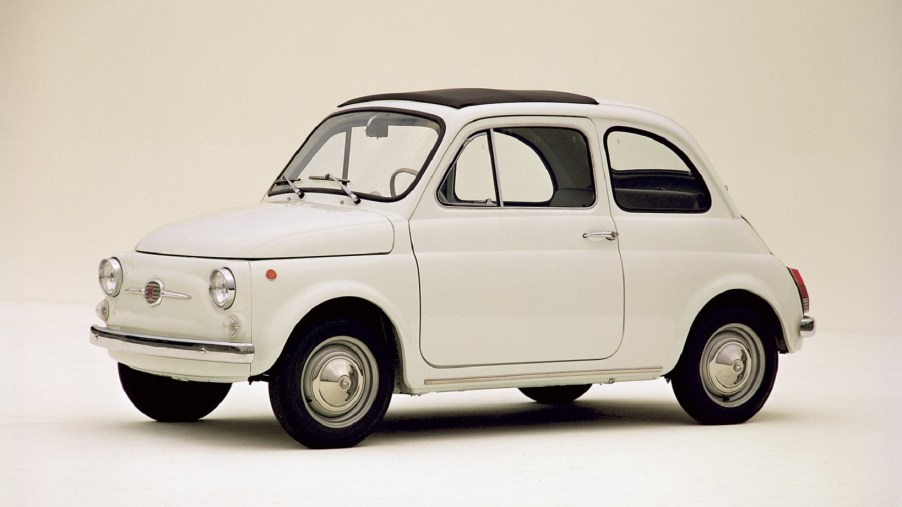
Why Are Classic Fiat 500s Worth More Than Some Modern Ones?
As the owners of air-cooled 911s can attest, classic cars sometimes loom large against their modern descendants. Sometimes the looming is more about a car’s ethos, as seen with the E30 BMW M3. Other times, though, the vintage model can eclipse its newer counterpart in market value. Such is the case with the Fiat 500—specifically, the recently-discontinued US-market one, not the latest model. Classic Fiat 500 values have been creeping past used modern ones’ prices. But why?
The classic Fiat Nuova 500 is an exercise in simplicity
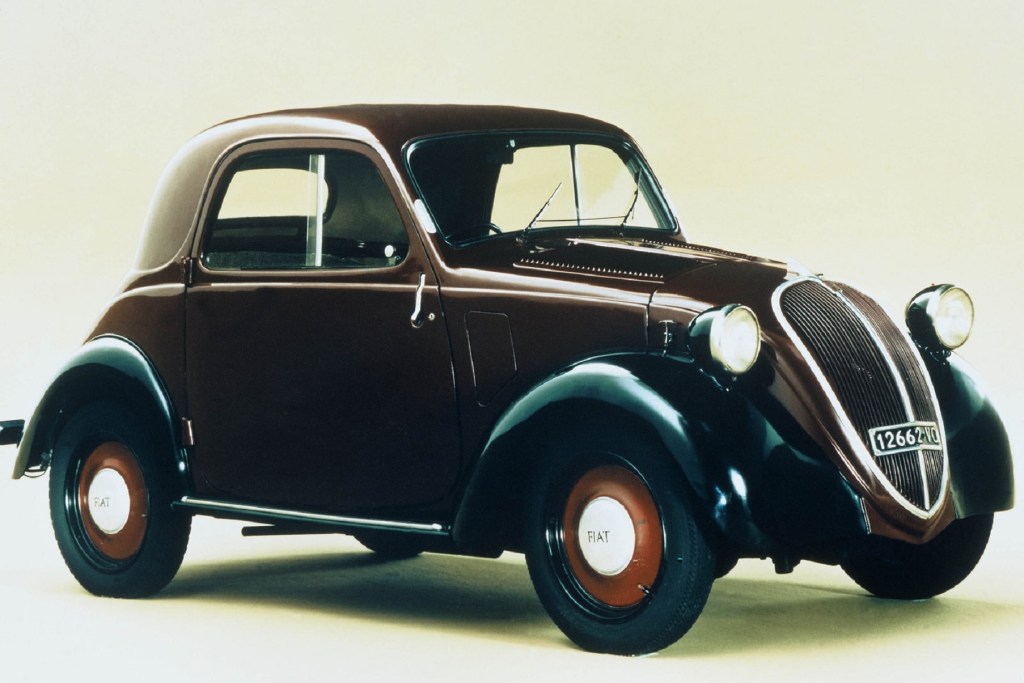
The Fiat 500 name is a fairly historic one for the Italian automaker. The first car to bear it was the 1936 500 ‘Topolino.’ Fiat made roughly half a million examples before it was discontinued in 1955, Car and Driver reports. And in its day, it was actually something of a hot hatch with the right modifications. But after WWII, Italian citizens needed something even cheaper and more efficient to get around. So, in 1957, Fiat launched the Nuova (‘New’) 500.
The Fiat Nuova 500 is essentially an Italian competitor to the original Mini and the Volkswagen Beetle, Silodrome reports. Namely, it’s an affordable and frugal way of getting around. Not to mention tiny: it’s less than 10’ long and weighs 1100 pounds. Though admittedly, there was a longer-wheelbase station wagon version called the Giardinera, Automobile reports. Nevertheless, as with the rest of its design, it’s all done on purpose, Petrolicious explains.
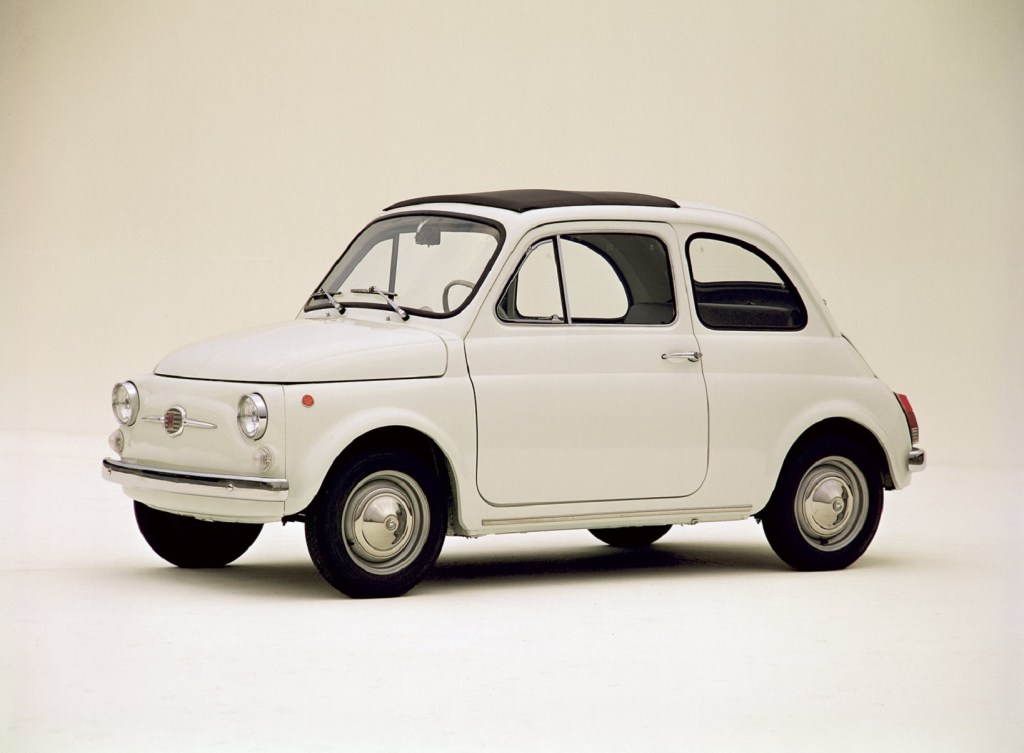
The classic Fiat 500’s small size is perfect for the narrow alleys of cities like Rome. I can personally attest to this: I’ve seen modern 500s barely fit in some Roman side-streets. The little hatchback comes standard with a fabric top—not as a luxury, but to save expensive steel, Autoblog explains. If you wanted a fuel gauge, you had to bump up to the 500L, the ‘Lusso’ (‘luxury’) model, The Drive reports. And instead of traditional engine mounts, the Fiat Nuova 500’s engine rocks on springs, Road & Track reports.
A classic Fiat Nuova 500 is still enjoyable to drive—and engine swaps can transform it
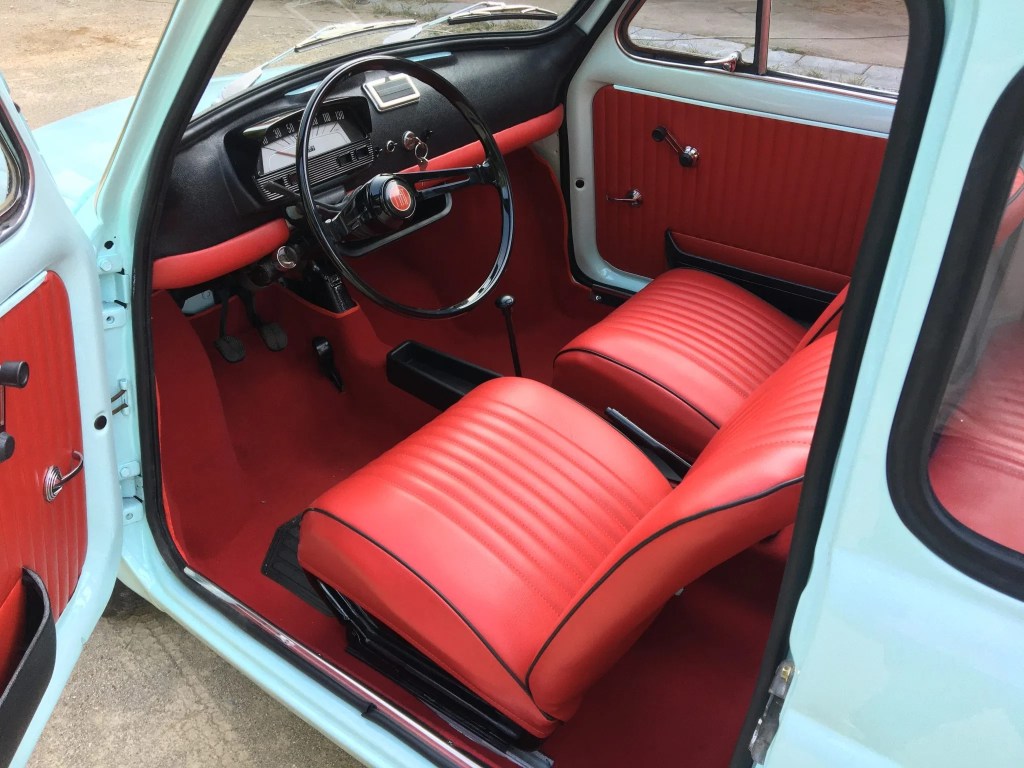
Speaking of the engine, the Nuova 500’s powertrain is just as pared-down as the rest of the car. The hatchback launched with a rear-mounted 479cc air-cooled two-cylinder engine rated at 13 hp, Autoweek reports. And it sends that power to the rear wheels via a 4-speed manual with no first-gear synchros.
Plus, while the classic Fiat 500 has a key, it doesn’t start the car. Instead, you turn the key and pull a small handle by the gear lever to activate the ignition. Why? It saved Fiat from spending money on more wiring.
But while the Fiat Nuova 500 isn’t necessarily fast or well-equipped, it’s actually fun to drive, Petrolicious reports. The small size makes it agile, as does its independent rear suspension, a rarity for the time. It doesn’t have much power, but you can use it all the time, Petrolicious explains.
True, its small size means there’s not much luggage space. But the lack of safety equipment means it’s roomy enough to seat four. Plus, while design appeal is always subjective, the classic 500 has enough of it to win a place at New York’s Museum of Modern Art, Automobile reports. So, it’s legitimately art.
The Fiat Nuova 500’s simplicity lends itself well to restoration work, Petrolicious reports. And it also means the little hatchback can be easily modified. In-period, Abarth managed to double its horsepower, Hagerty reports, and provided tuning parts from exhausts to suspension kits. And today, the tuning continues with engine swaps.
Classic Fiat 500s have been fitted with everything from electric motors to Subaru WRX STI powerplants, Road & Track reports. A few hillclimbers swap in engines from motorcycles like the Hayabusa, R&T reports. One Nuova 500 owner even installed a 580-hp Lamborghini V12, with the help of some extra-wide fender flares, R&T reports.
The simplicity and style come at a price
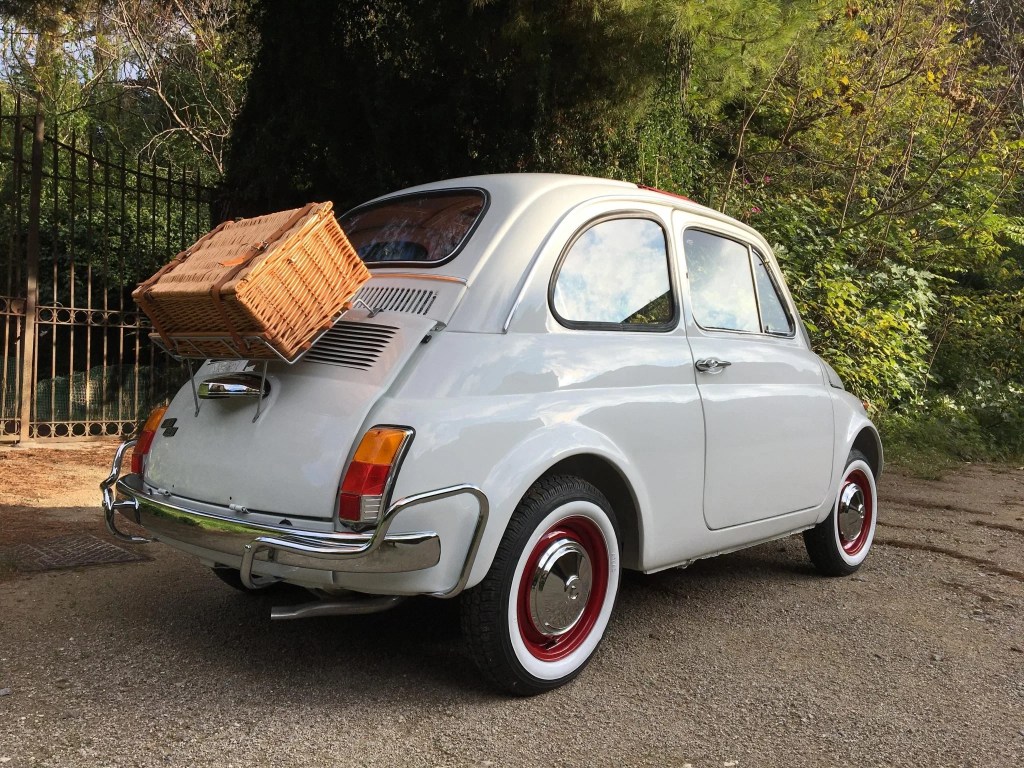
The Nuova 500 isn’t the only classic Fiat that’s been rising in value recently. The 500-based Jolly, a fabric-topped beach buggy with wicker seats, can easily go for around $50k, Hagerty reports. Some have even gone for more than $100,000. Though admittedly, that’s partially down to rarity: Fiat only made about 600 examples of the Jolly.
The classic Fiat 500 isn’t at that level, and likely never will be. Fiat made over 3.8 million Nuova 500s by the time production ended in 1975, Autoweek reports. But they still tend to be more valuable than their modern used counterparts. A classic 500 typically goes for about $10,000 on Bring a Trailer. In contrast, it’s possible to find sub-100,000-mile used modern ones on Autotrader for closer to $5000. But why the price difference?
It’s likely due to the same reasons why vintage SUV and pickup truck prices have gone up. The classic 500’s simplistic design is charming, and while it doesn’t have modern technology, it’s a fairly simple car to maintain. True, it’s not a highway car. But for commuting around crowded cities, the Nuova 500 still has what it takes. And unlike the scooters it was meant to supplant, it has a roof.
Follow more updates from MotorBiscuit on our Facebook page.


